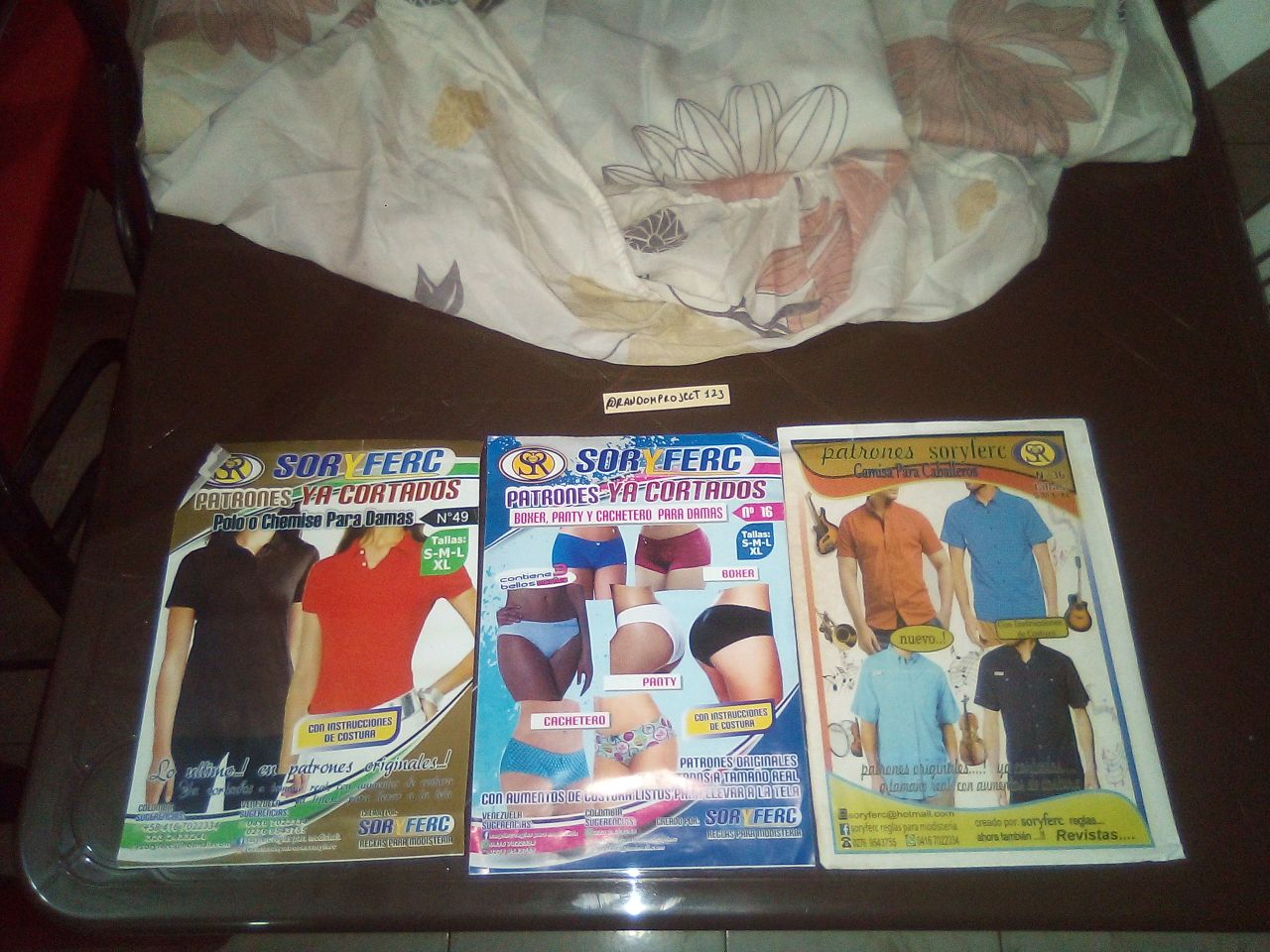
Para empezar por algun lado, debo iniciar diciendo que yo no soy un profesional de la costura, ni tampoco considero que tenga un conocimiento basico. Aunque si admito que soy capaz de comprender ciertos procesos a lo largo del desarrollo de una confeccion. A pesar de ello, mi opinion es enteramente mia, esto no es un manual de como iniciar en el mundo de la costura o algo por el estilo, aqui relato mi experiencia personal y las soluciones que yo encontré de manera autodidacta a los diferentes problemas que se me presentaron.
Habiendo dicho lo anterior, compré 3 "revistas" de patrones, una de ropa interior, una de chemise para dama y otra de camisas para caballeros.
To start somewhere, I must start by saying that I am not a professional sewing, nor do I consider that I have a basic knowledge. Although I do admit that I am capable of understanding certain processes throughout the development of a clothing. Despite this, my opinion is entirely my own, this is not a manual on how to start in the world of sewing or something like that, here I relate my personal experience and the solutions that I found in a self-taught way to the different problems that they introduced themselves to me.
With that said, I bought 3 pattern "magazines," one for underwear, one for chemise for women, and one for men's shirts.
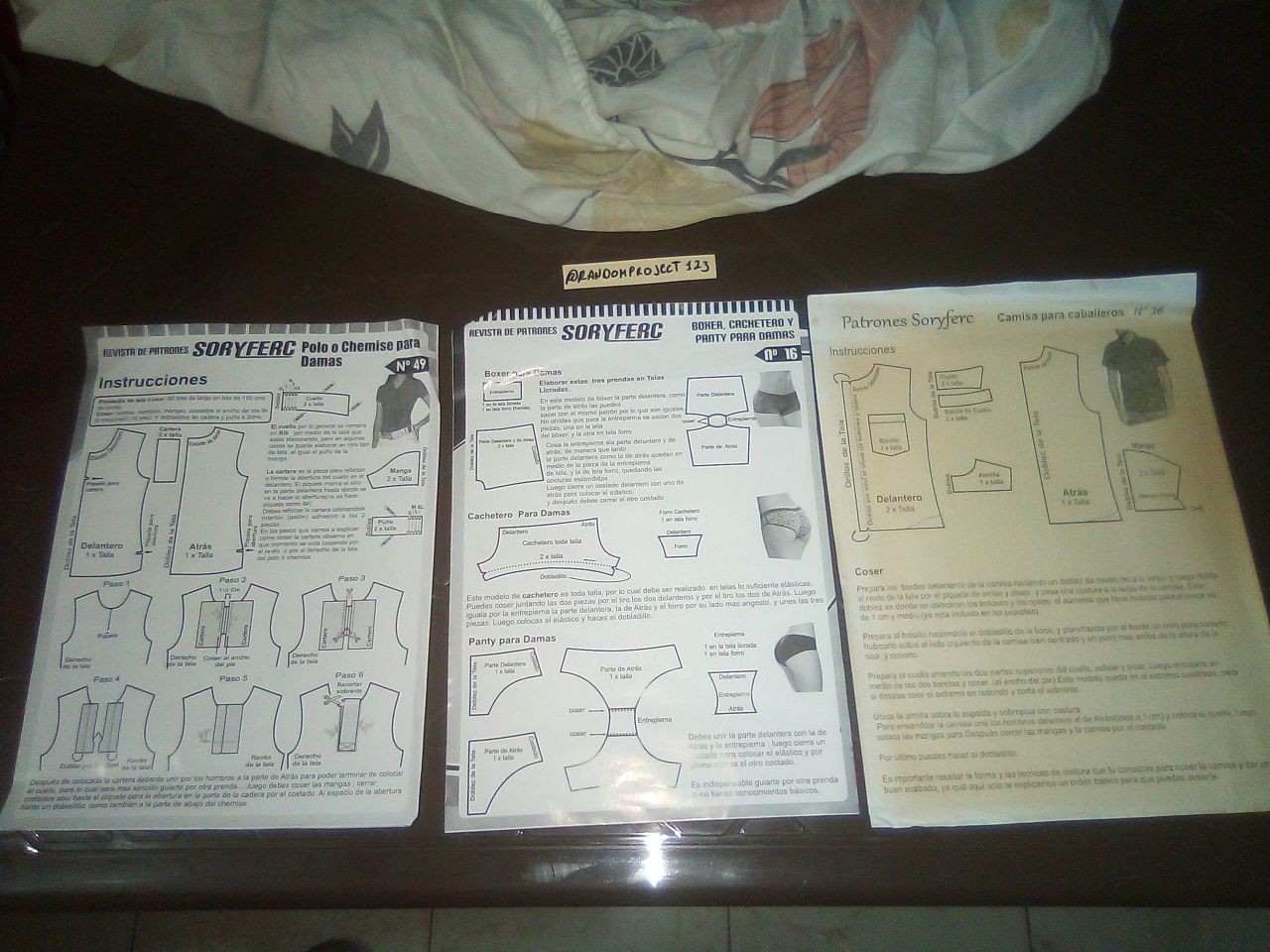
Para empezar, no eran revistas nada, era simplemente un caratula con una explicacion general en la parte de atras y los patrones en un papel frágil. Llegué a la tienda y me deslumbré, lo primero fue que me sacaron unos albunes tipo catalogo de todas las "revistas" que tenian y yo me volvi loco viendo todo y odiando no tener el dinero para comprar una de cada una.
Aunque una señora que tambien estaba viendo los catologos me hizo entender una cosa, no necesito tenerlos todos, solo los indicados. Por ejemplo, el de ropa interior trae todas las tallas desde la S hasta la XL, entonces solo debo cambiar el diseño manteniendo el mismo tamaño, entonces de esas pantys, puedo sacar tangas, modelos de encaje y demas. Igual pasa con las chemise, modificando el cuello puedo tener franelas de la talla SS a la XL y con las camisas planeo hacer lo mismo.
To begin with, they weren't magazines at all, it was just a cover with a general explanation on the back and the patterns on a flimsy piece of paper. I got to the store and was dazzled, the first thing was that they took out some catalog type albums of all the "magazines" they had and I went crazy seeing everything and hating not having the money to buy one of each.
Although a lady who was also looking at the cathologies made me understand one thing, I don't need to have all of them, just the right ones. For example, the one for underwear brings all sizes from S to XL, so I just have to change the design keeping the same size, then from those pantyhose, I can get thongs, lace models and others. The same happens with chemise, by modifying the neck I can have flannels from size SS to XL and with shirts I plan to do the same.
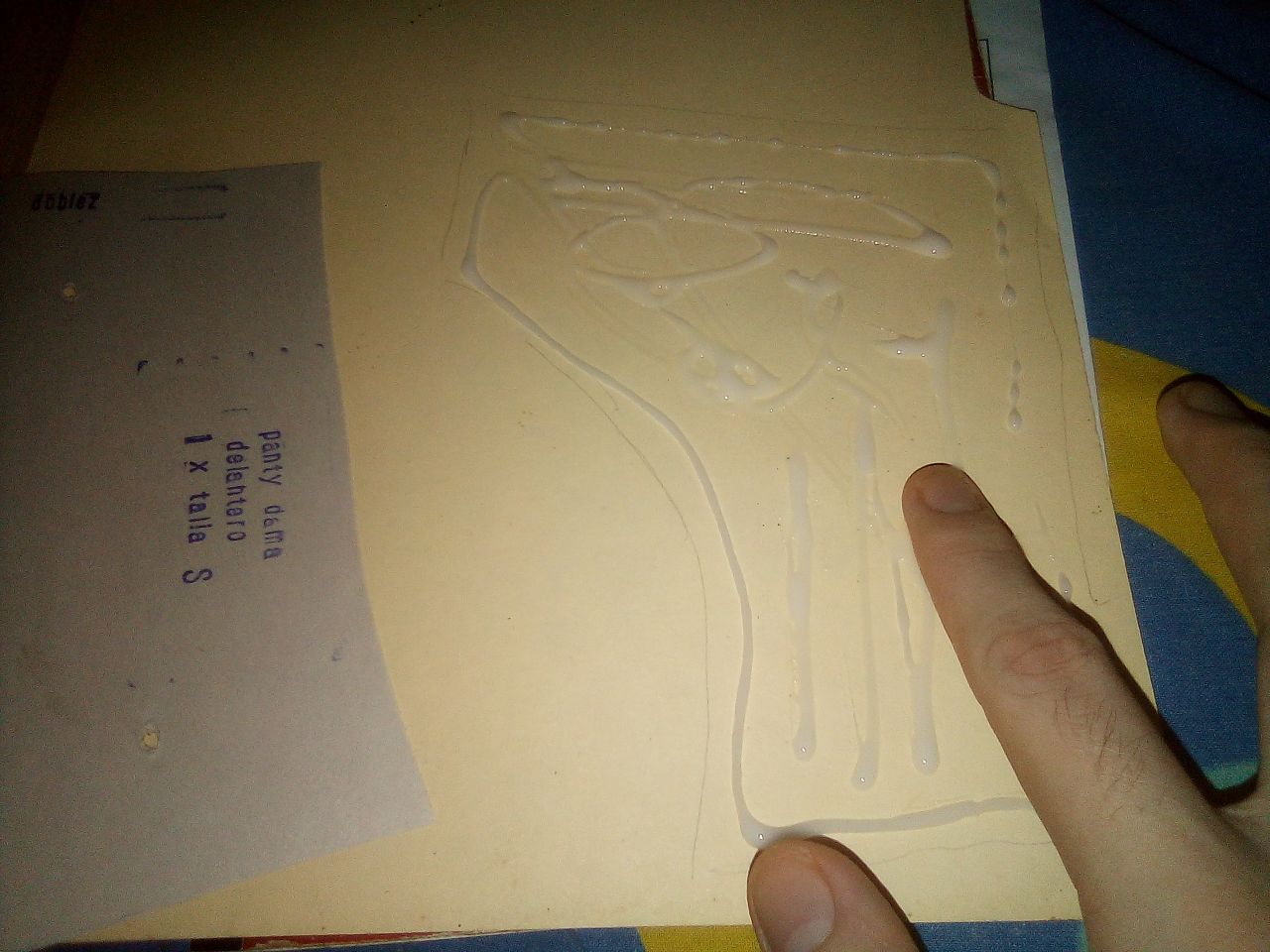
Antes de volverme loco, lo primero que hice fué agarrar esos fragiles papeles y empezar a pegarlos en carpetas de cartulina. los patrones vinieron en un papel parecido al papel periodico y si bien estaba muy emocionado y con ganas de probarlos todos, decidí calmarme de nuevo y empezar primero por reforzarlos para que me sean mas duraderos. Al principio todo parecia perfecto pero...
Before going crazy, the first thing I did was grab those fragile papers and start gluing them on cardboard folders. the patterns came in a paper similar to the newspaper and although I was very excited and wanting to try them all, I decided to calm down again and start first by reinforcing them so that they are more durable. At first everything seemed perfect but...
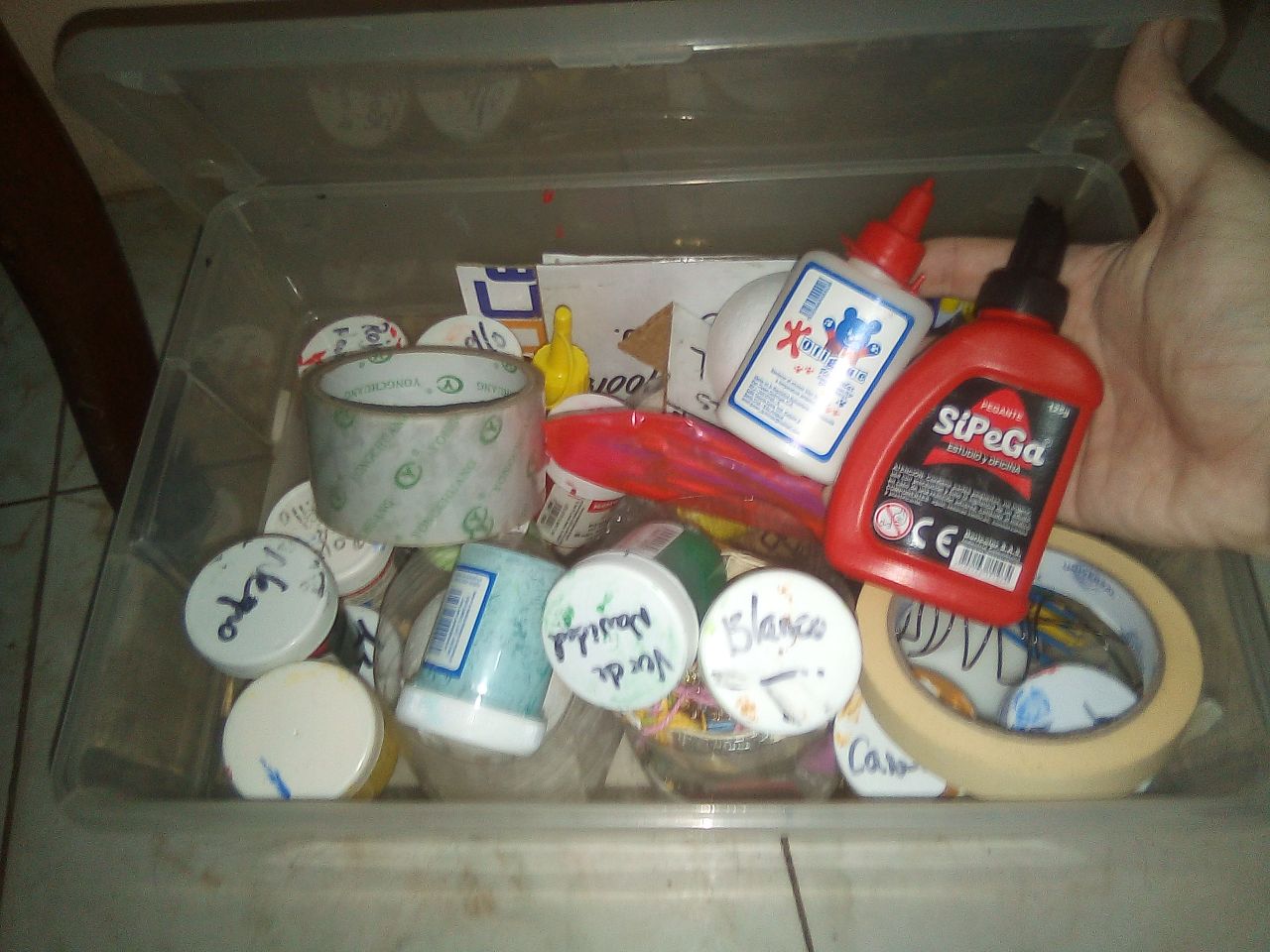
Solamente pasando los patrones de la ropa intima me gasté todo el envase rojo de pega blanca y dejé un dedo del otro. La pega escolar no es realmente costosa, puedo comprar un kilogramo por menos de 10$, aunque me puse a pensar y con 10$ puedo comprar 5 patrones mas y asi aumentar mi arcenal.
Just passing the patterns of the underwear I used up the whole red container of white glue and left one finger of the other. School glue is not really expensive, I can buy a kilogram for less than $ 10, although I started to think and with $ 10 I can buy 5 more patterns and thus increase my arcenal.
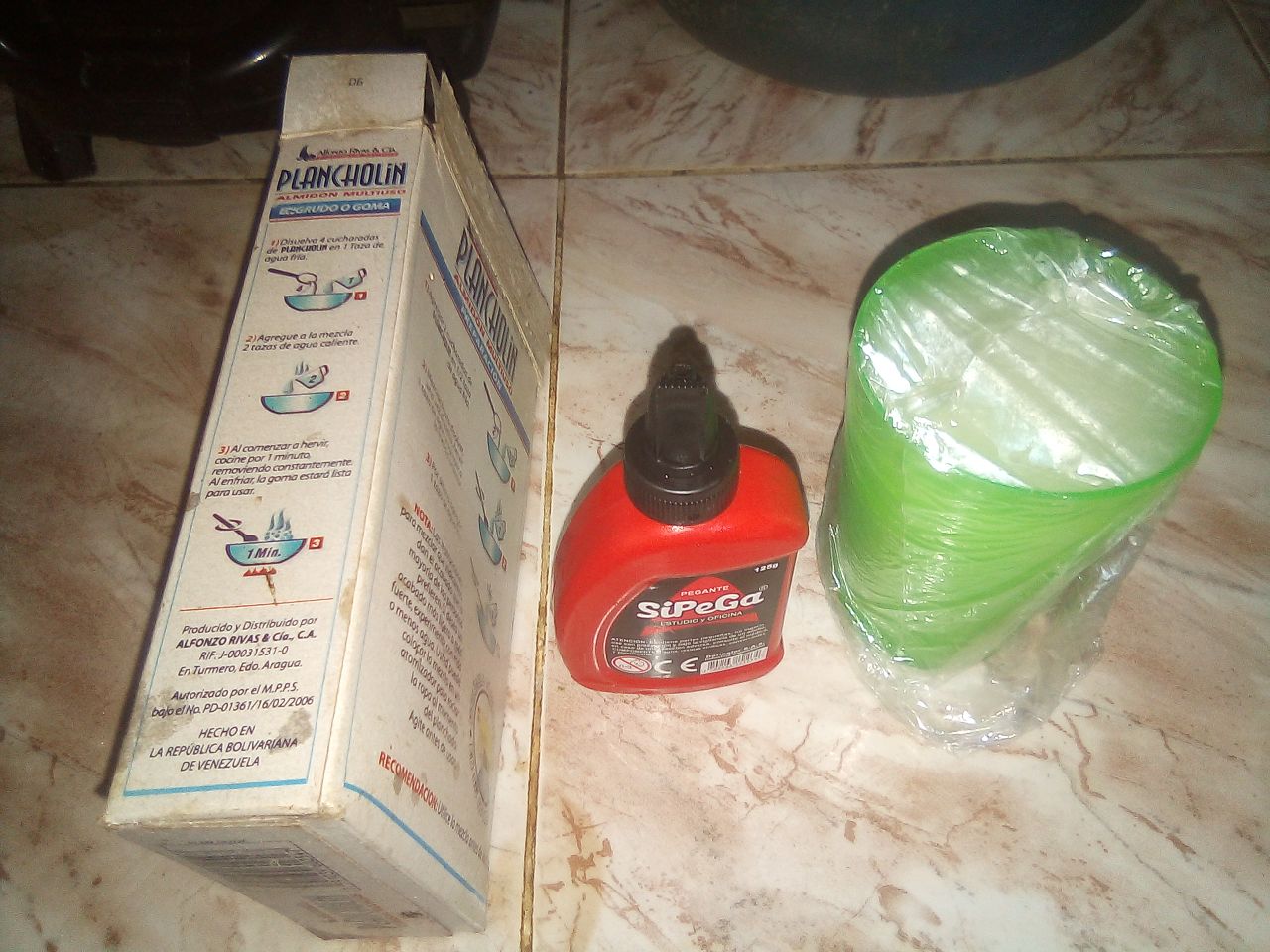
Creo que ya a estas alturas todos aca conocen esta tecnica, aunque si a alguno le falta se las explicaré, el Plancholin es un tipo de almidon poco refinado que se suele utilizar para dar duresa a los tejidos y que asi mantengan cierta forma. Pues para empezar, puedes utilizar Maicena, asi que no te vuelvas loco buscando esto, solo mete zoom a la receta y lo haces igual, a mi con dos cucharadas me salió ese vaso y el envase rojo hasta el tope, sin contar lo que se me cayó porque me quemé con la olla, pero esa es otra historia..
I think that by now everyone here knows this technique, although if anyone lacks I will explain it to them, Plancholin is a type of unrefined starch that is usually used to give fabrics hardness and thus maintain a certain shape. Well, to begin with, you can use cornstarch, so don't go crazy looking for this, just zoom in on the recipe and do it the same, with two tablespoons I got that glass and the red container to the top, not counting what I know I fell because I was burned with the pot, but that's another story..
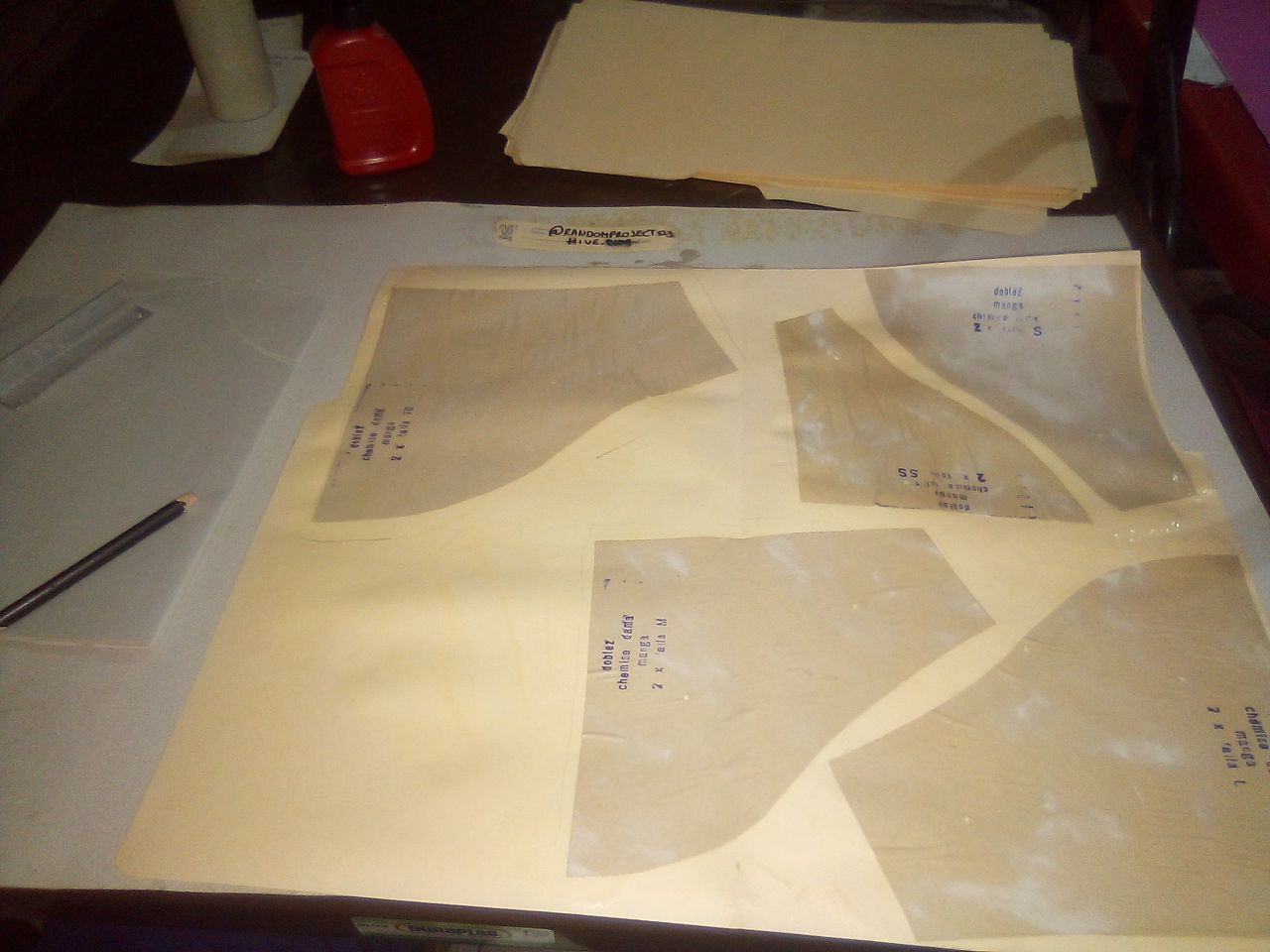
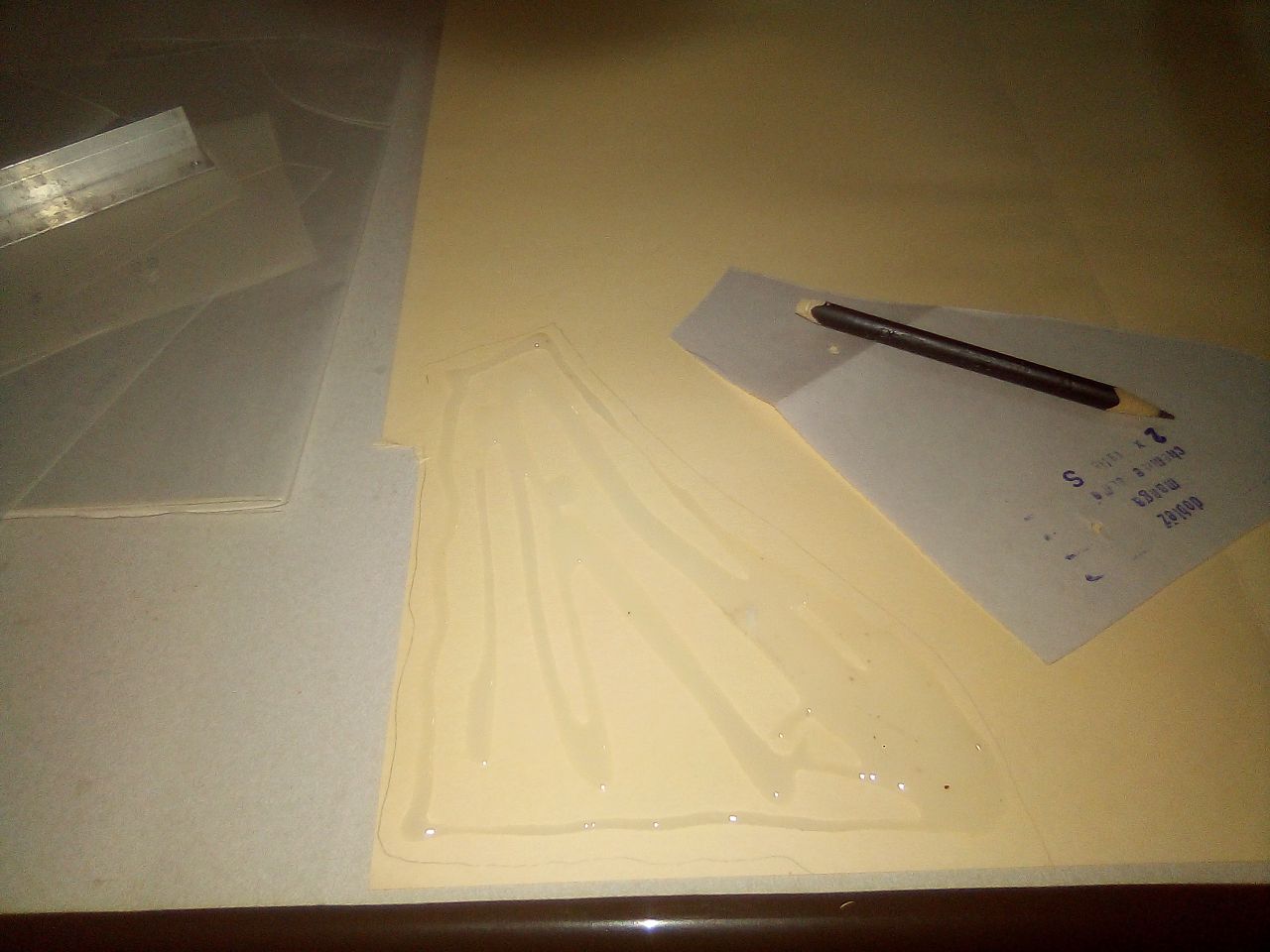
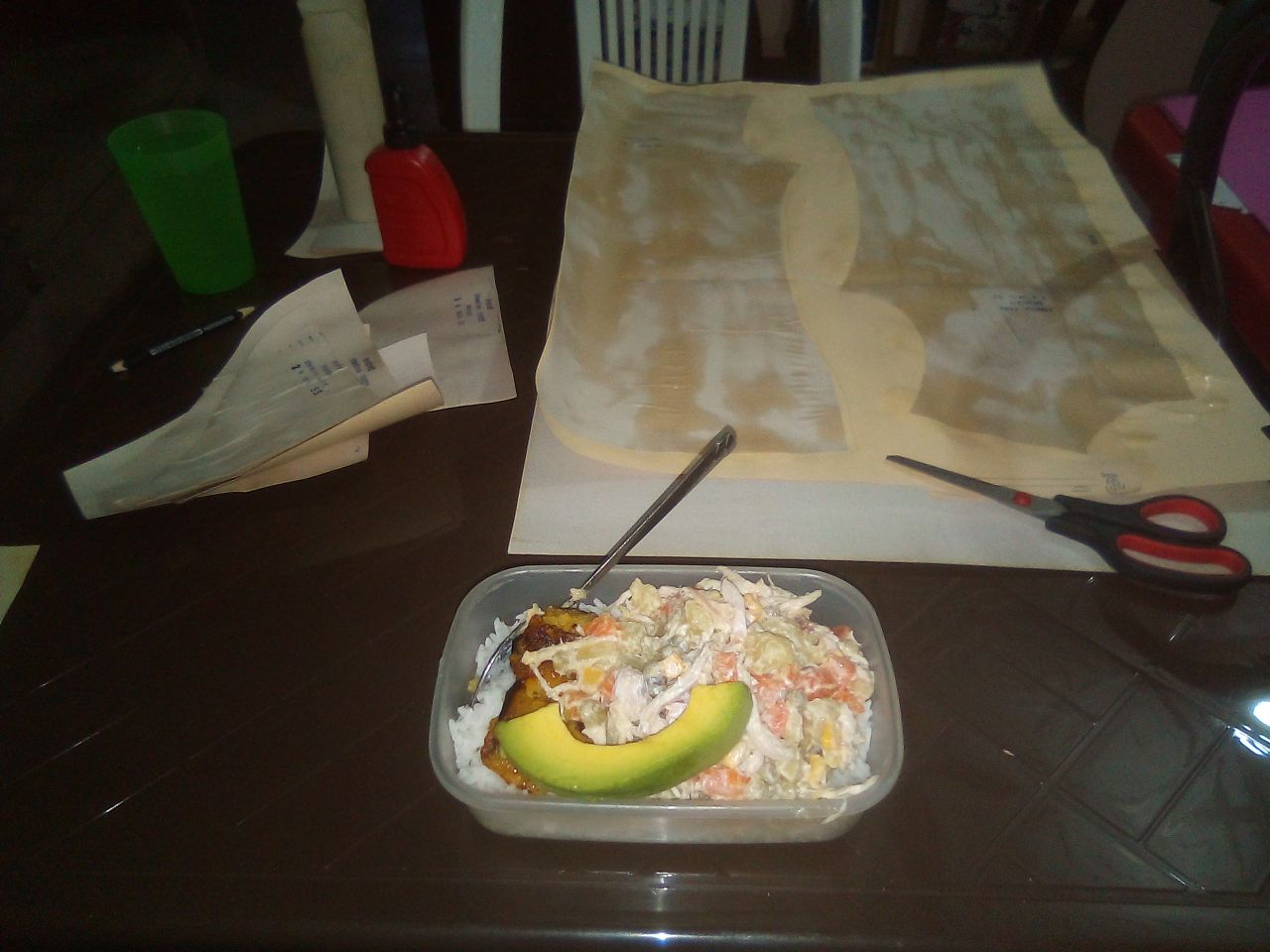
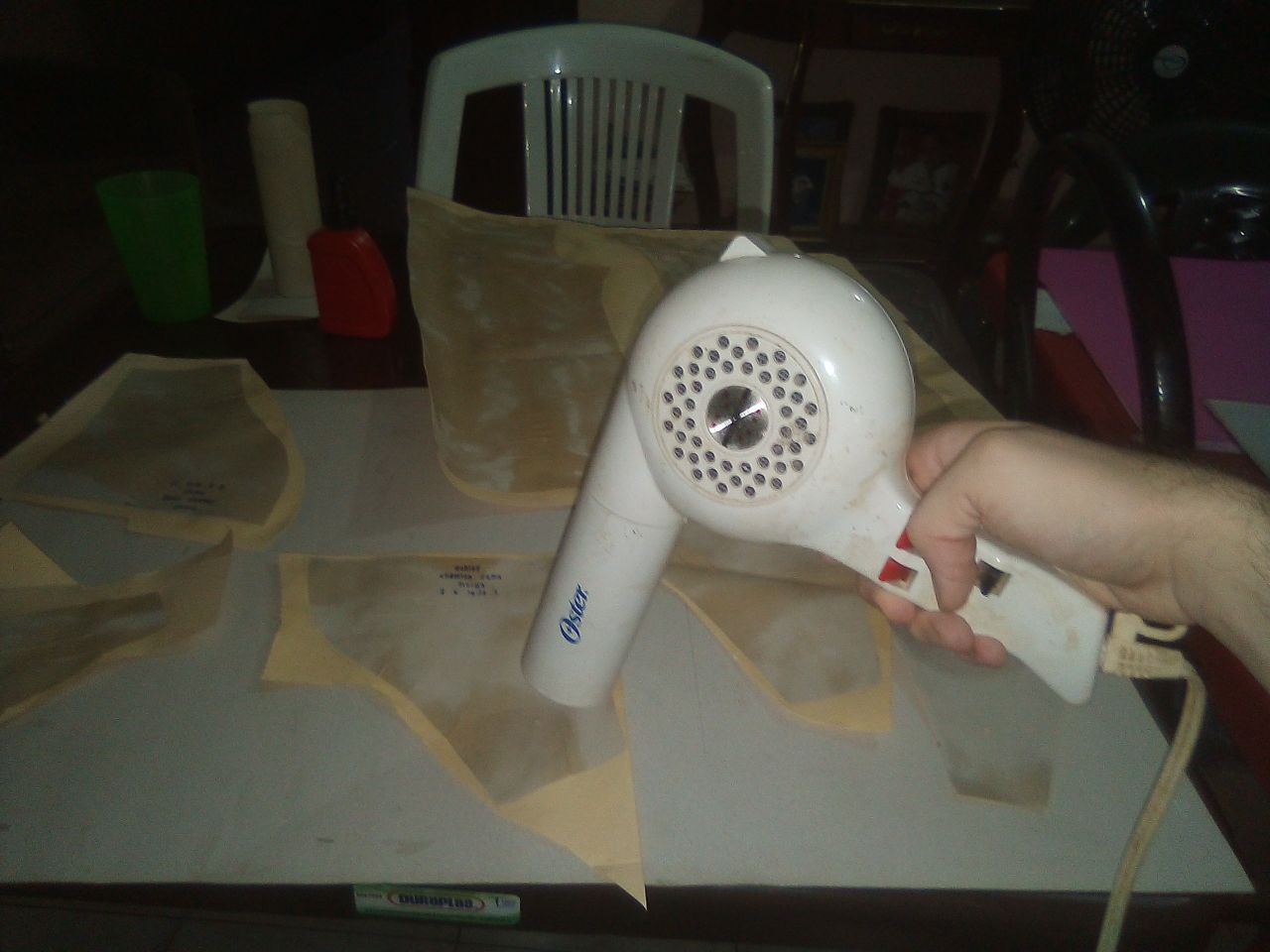
¿Funsiona? si, funsiona, solo que es algo un poco mas liquido al ser a base de agua y no se caucho y tarda mas en secar, aunque para pegar este papel tan delicado es suficiente, solo hay que tratarlos con cariño. Recomiendo esto al 100% porque una caja de Maicena pequeña por ejemplo cuesta 0.50$ y trae como 6 cucharadas aproximadamente, entonces gastar 10$ en un kilogramo de pega o 0.50$ en una Maicena, pues no hay mucho que pensar. Lo unico malo es que tarda mas en secar pero puedes utilizar un secador como yo y asi acelerar el proceso o sino, simplemente ponte a almorzar mientras se seca lentamente.
Does it work? Yes, it works, only that it is something a little more liquid as it is water-based and it is not rubber and it takes longer to dry, although to stick this delicate paper is enough, you just have to treat them with love. I recommend this 100% because a small box of cornstarch for example costs $ 0.50 and brings about 6 tablespoons, so spend $ 10 on a kilogram of glue or $ 0.50 on a cornstarch, because there is not much to think about. The only bad thing is that it takes longer to dry but you can use a dryer like me and thus speed up the process or else, just have lunch while it dries slowly.
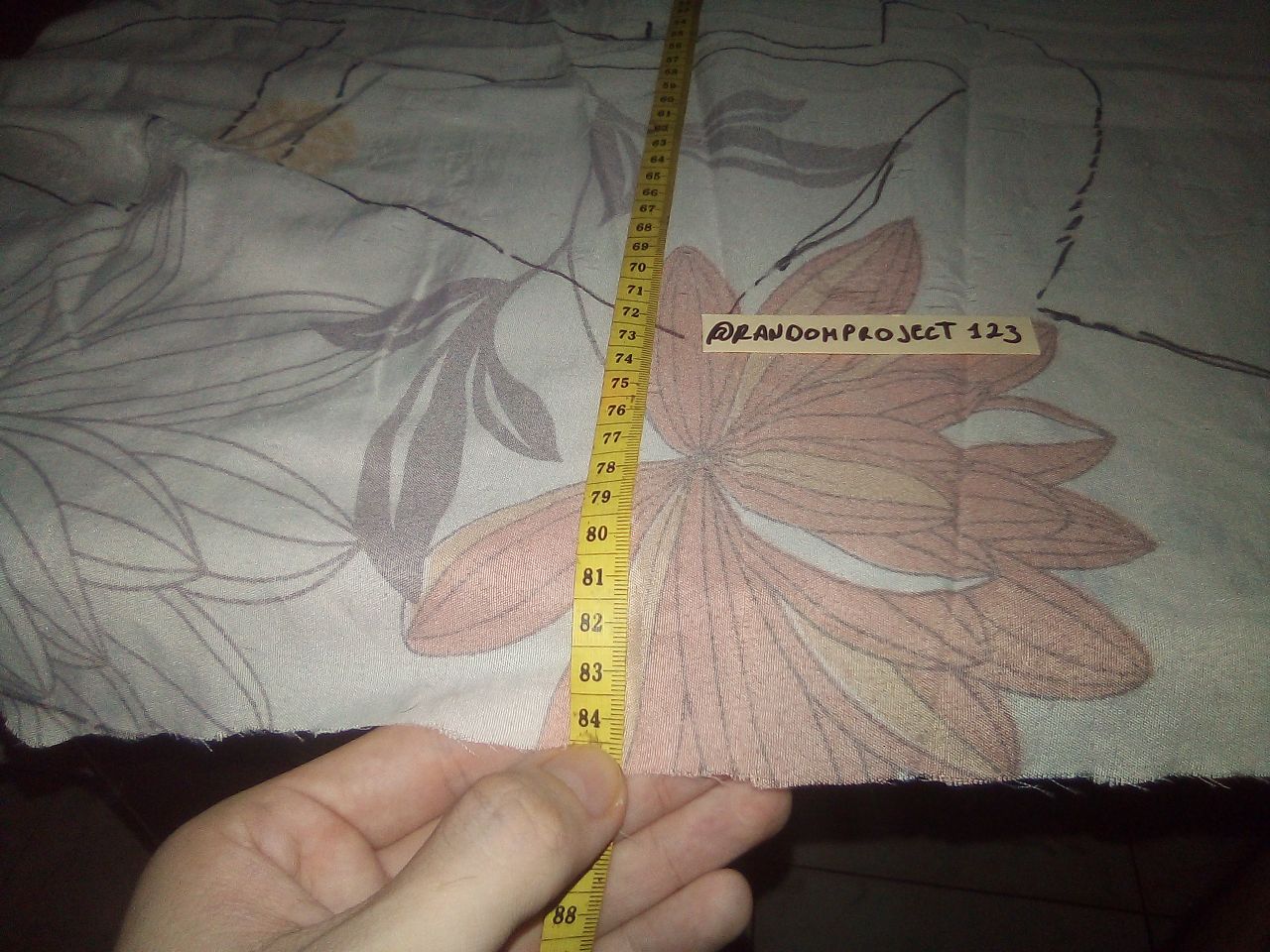
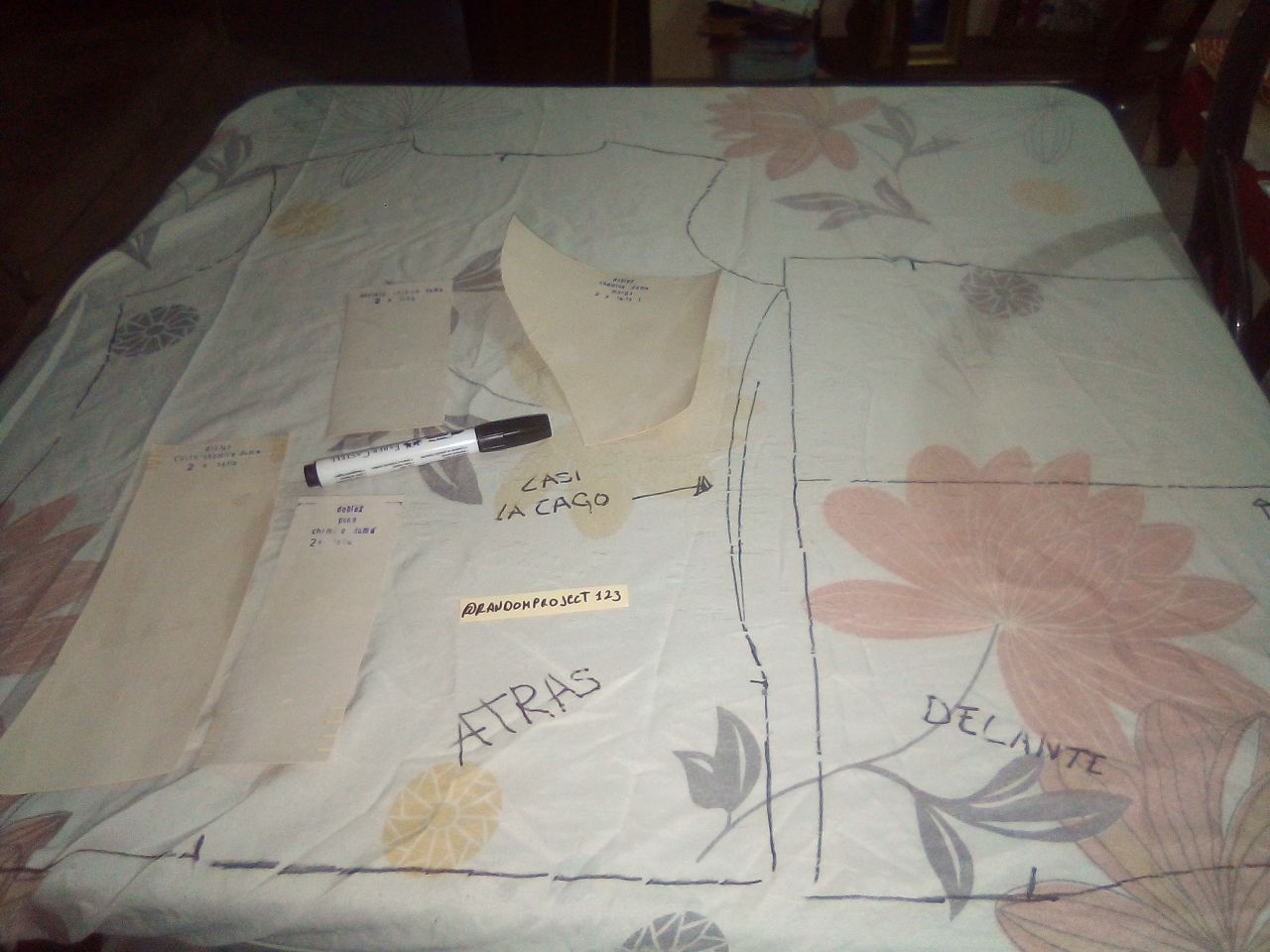
Momento de practicar, agarré una tela vieja de una sabana que ya estaba para botarse y marqué el patron de una Chemise talla L, me sorprendí por la poca cantidad de tela que se necesita, es incluso menos que lo que marco en la fotografia, marqué todo sin esforzarme mucho en cuidar los margenes porque al ser una sabana tenia elastica en los bordes, calculo que unos 75cm x 1.50m de ancho seria suficiente y teniendo en cuenta que la tela Super Poly y la tela Sport cuesta 3.5$ respectivamente sale mucho mas economico hacer que comprar. Una chemise marca Columbia cuesta entre los 15 a 25$, entonces hacer una por menos de 5$ para mi seria un logro, y el "Columbia" se lo pongo con marcador jajaja.
Time to practice, I grabbed an old cloth from a sheet that was already to be thrown away and marked the pattern of a size L Chemise, I was surprised by the little amount of cloth that is needed, it is even less than what I mark in the photograph, I marked All without making a lot of effort to take care of the margins because being a sheet had elastic at the edges, I calculate that about 75cm x 1.50m wide would be enough and taking into account that the Super Poly fabric and the Sport fabric cost 3.5 $ respectively, it comes out much more economical to do what to buy. A Columbia brand chemise costs between $ 15 to $ 25, so making one for less than $ 5 would be an achievement for me, and I put the "Columbia" with a marker hahaha.
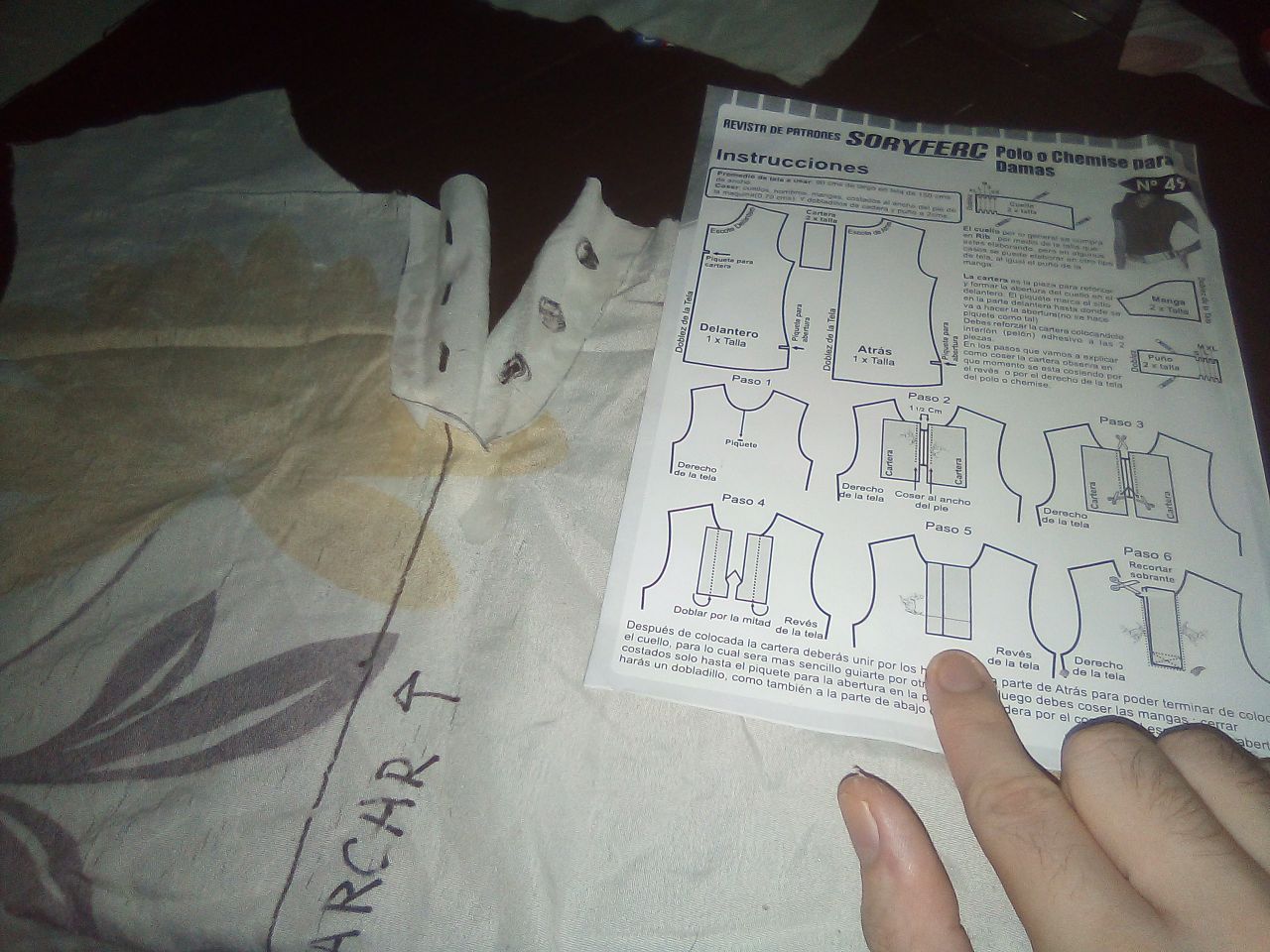
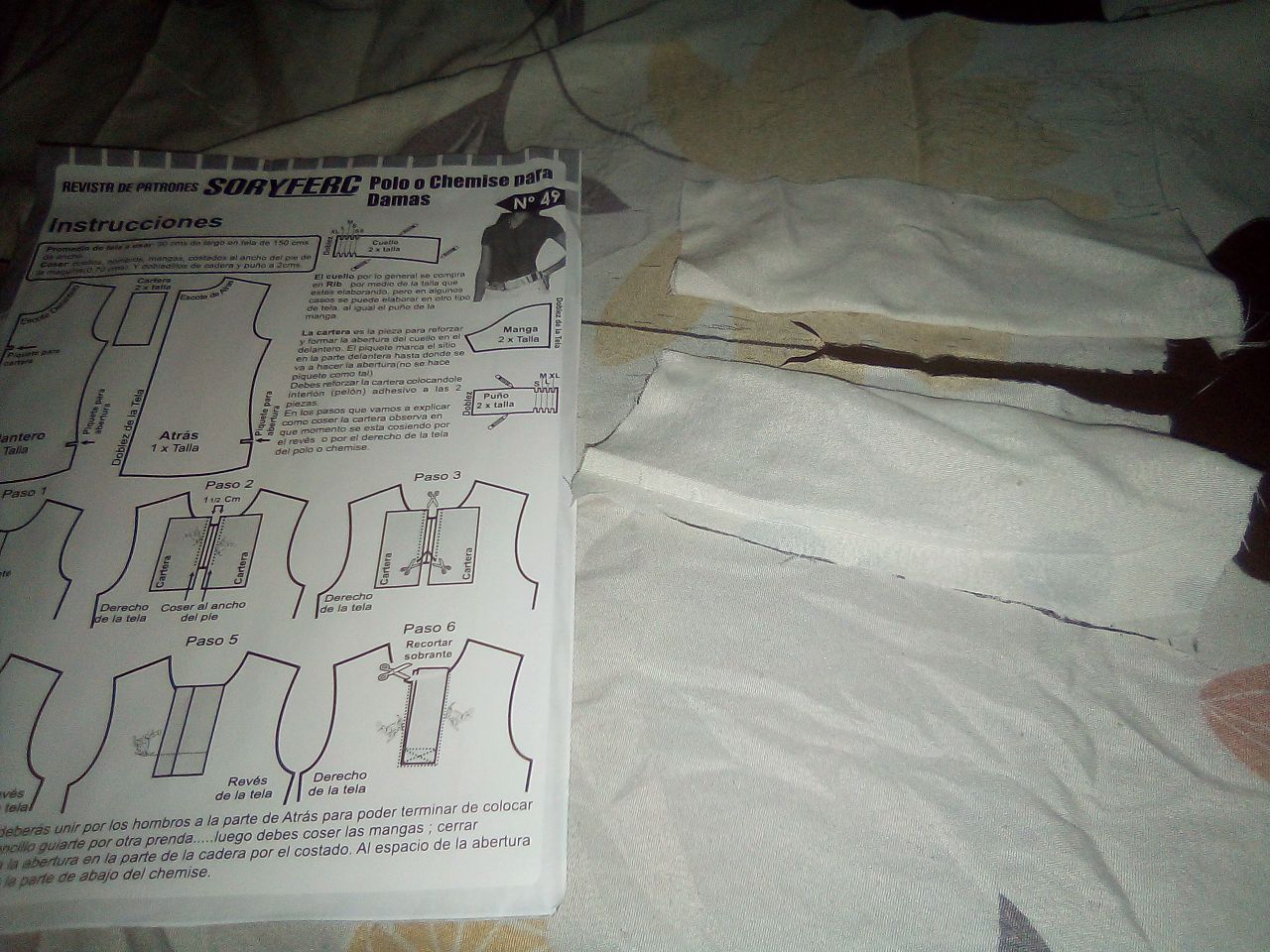
Aqui honestamente no se si es culpa del patron o culpa mia, NO ENTENDI COMO HACER EL CUELLO, intenté hacerlo lo mas parecido al dibujo y al final entendí la idea, aunque creo quqe está mal ilustrado. Otra cosa que debo aclarar es que No utilice hilo, junté todo con pega. ¿por que? porque luego de pegar y recortar mas de 20 patrones diferente ya me dolia hasta el alma, ademas, solo queria saber si las medidas eran las correctas, mas abajo explico porque mi interes por las tallas.
Here I honestly don't know if it's the boss's fault or my fault, I DIDN'T UNDERSTAND HOW TO MAKE THE NECK, I tried to do it as close to the drawing and in the end I understood the idea, although I think it's poorly illustrated. Another thing that I must clarify is that I do not use thread, I put everything together with glue. because? Because after pasting and cutting out more than 20 different patterns, it already hurt my soul, besides, I just wanted to know if the measurements were correct, below I explain why my interest in sizes.
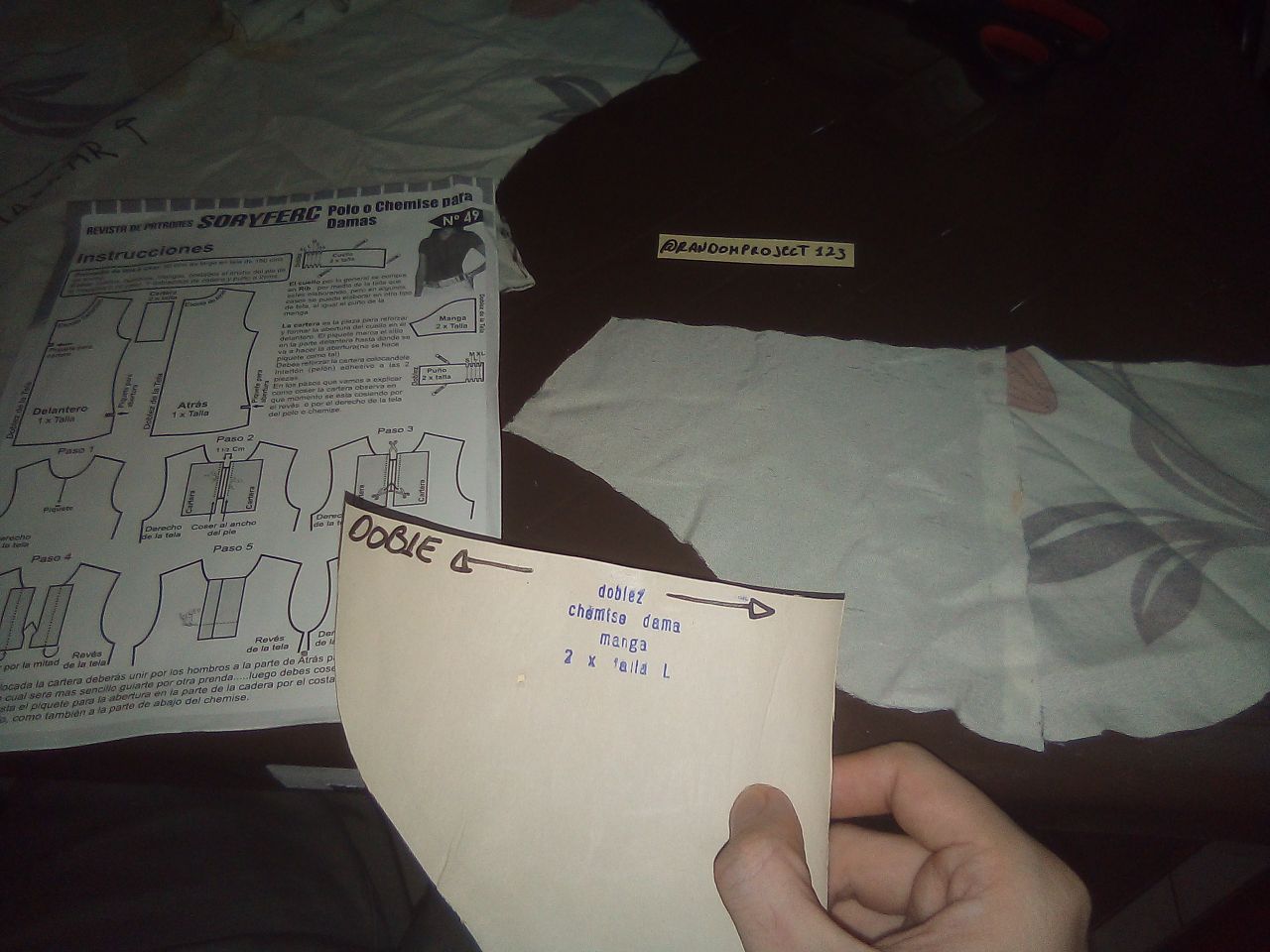
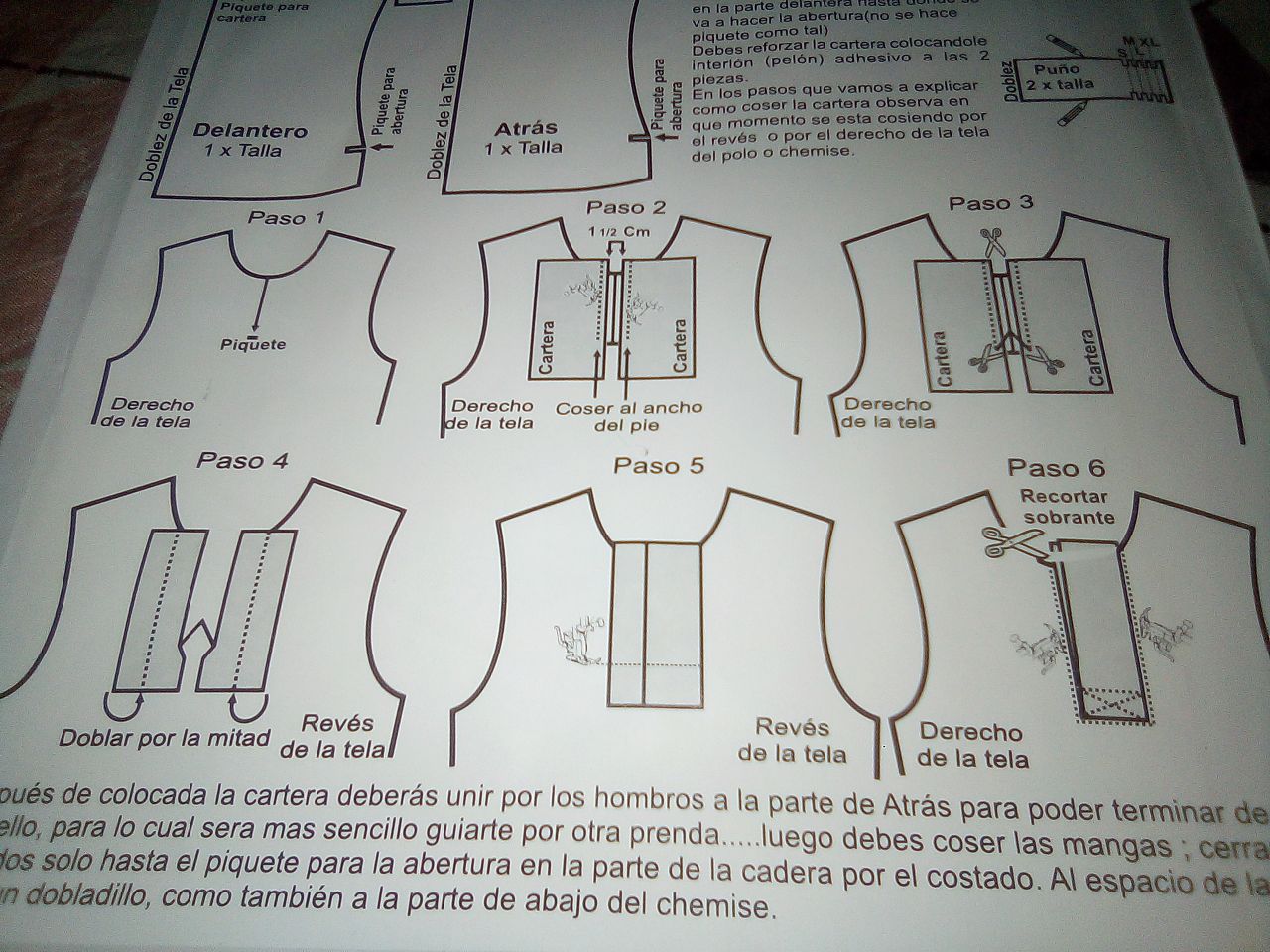
Les dejo una imagen mas de cerca de las instruccione sque venian con los patrones a ver si es quqe yo no las pude entender o si de verdad no son muy completas. otra cosa a tener en cuenta es que la parte que dice "dobles" significa que debes marcar eso en una tela toble o simplemente marcar un lado y luego marcarlo al lado. yo no lo noté al principio, es facil notarlo en la mitad del pecho de una camisa digamos, aunque para un inexperto como yo, es dificil notarlo en las mangas y cortes del cuello.
I leave you a closer picture of the instructions that came with the patterns to see if it is that I could not understand them or if they really are not very complete. Another thing to keep in mind is that the part that says "doubles" means that you must mark that on a toble fabric or just mark one side and then mark it next. I did not notice it at first, it is easy to notice it in the middle of the chest of a shirt, let's say, although for an inexperienced like me, it is difficult to notice it in the sleeves and neck cuts.
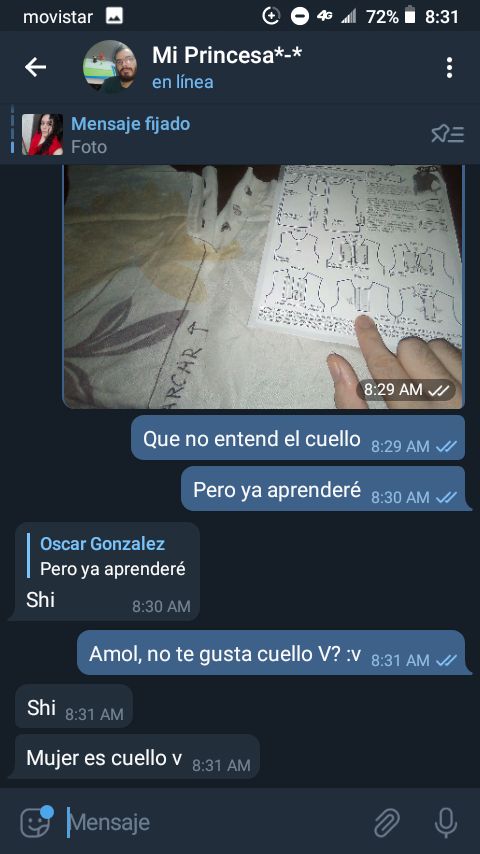
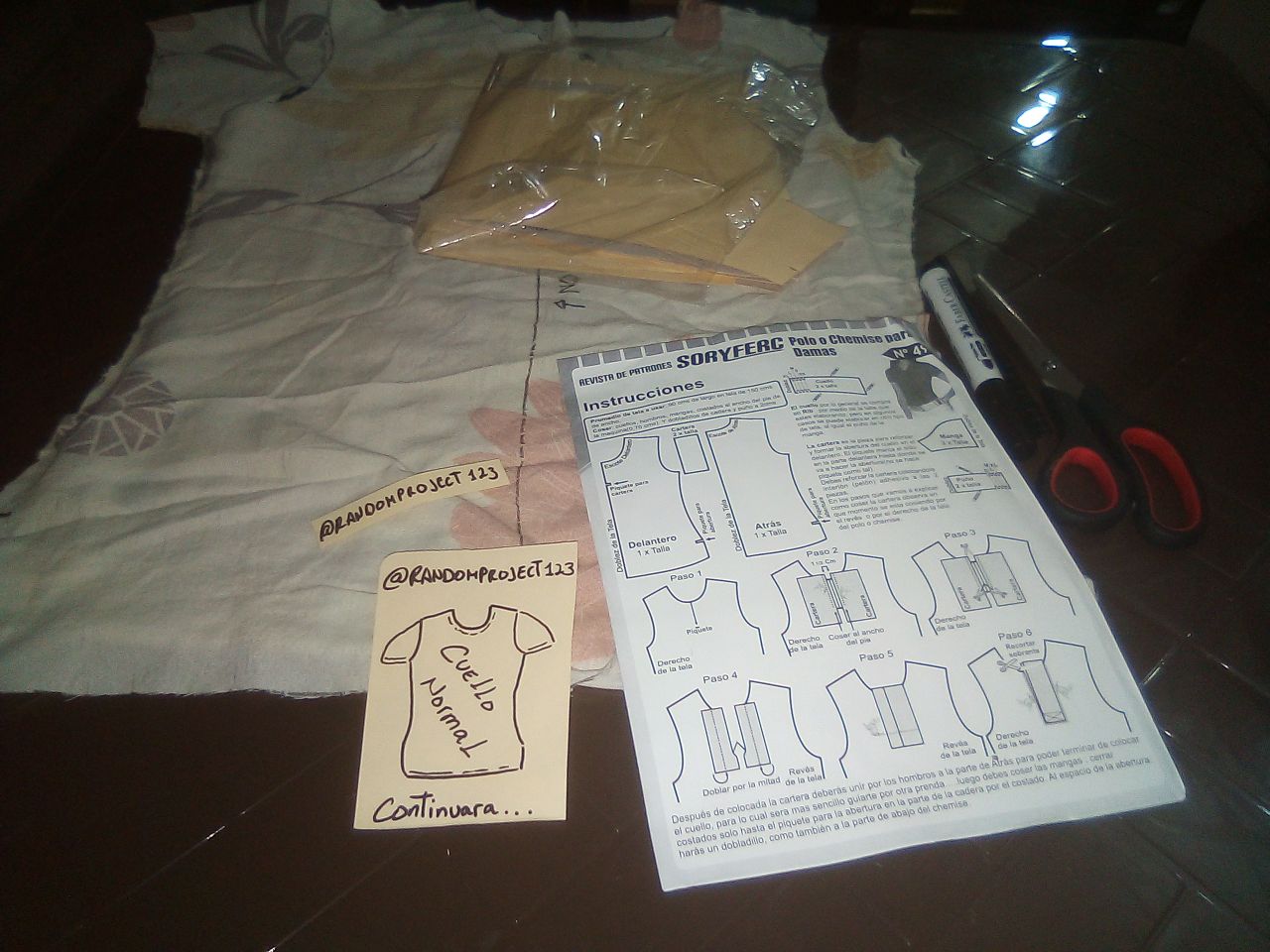
Para finalizar este Post quiero decir que no estoy conforme con lo del cuello, porque no lo entendí. Dicho eso, considero que es buena inversion tener en casa estos patrones sobre todo si compras de manera inteligente. En mi caso me costaron 2$ cada uno, aunque con esos 3 ya no me es necesario comprar muchos otros. me explico y repito en parte lo que expliqué al inicio del post.
Compré una chemise que trae sus patrones para el cuello y botones, quitando esa parte tengo el patron basico para una franela, a la cual le puedo modificar el cuello como quiera y asi lograr mas modelos a partir de ese, compré la camisa porque al entender como funciona el mecanismo de ensamblaje, tambien puedo modificar el de chemise para convertirlas en camisas. de igual forma las camisas puedo convertirlas en franelas y chemise paracaballeros, ya que tengo el cuello, botones y bolsillo. y con las ropa intima funciona igual, al tener un boxer para mujer que es lo que contiene mas tela por asi decirlo, simplemente puedo ir recortando hasta obtener la forma que yo desee y de ahi puedo confeccionar mas modelos.
Entonces el dinero qu eme ahorro en esos patrones extras y lo que me ahorré en pega, puedo gastarlo en patrones de jeans, quqe me servira para monos deportivos, puedo comprar patrones para sostenes deportivos que me servira para trajes de baño y sostenes comunes y manteniendo la misma idea puedo comprar un modelo variado de ropa infantil que me serviráigualmente para obtener las tallas correspondientes.
To end this Post I want to say that I am not satisfied with the neck thing, because I did not understand it. That said, I think it is a good investment to have these patterns at home, especially if you buy wisely. In my case they cost me $ 2 each, although with those 3 it is no longer necessary for me to buy many others. I explain myself and I repeat in part what I explained at the beginning of the post.
I bought a chemise that brings its patterns for the neck and buttons, removing that part I have the basic pattern for a flannel, to which I can modify the neck as I want and thus achieve more models from that, I bought the shirt because understanding As the assembly mechanism works, I can also modify the chemise to turn them into shirts. In the same way, I can turn the shirts into flannels and chemise for men, since I have a collar, buttons and a pocket. And with the underwear it works the same, having a boxer for women that is what contains more fabric so to speak, I can simply cut until I get the shape that I want and from there I can make more models.
So the money that I save on those extra patterns and what I saved on glue, I can spend on jeans patterns, which will work for me for sports suits, I can buy patterns for sports bras that will serve me for common swimwear and bras and keeping The same idea I can buy a varied model of children's clothing that will also serve me to obtain the corresponding sizes.
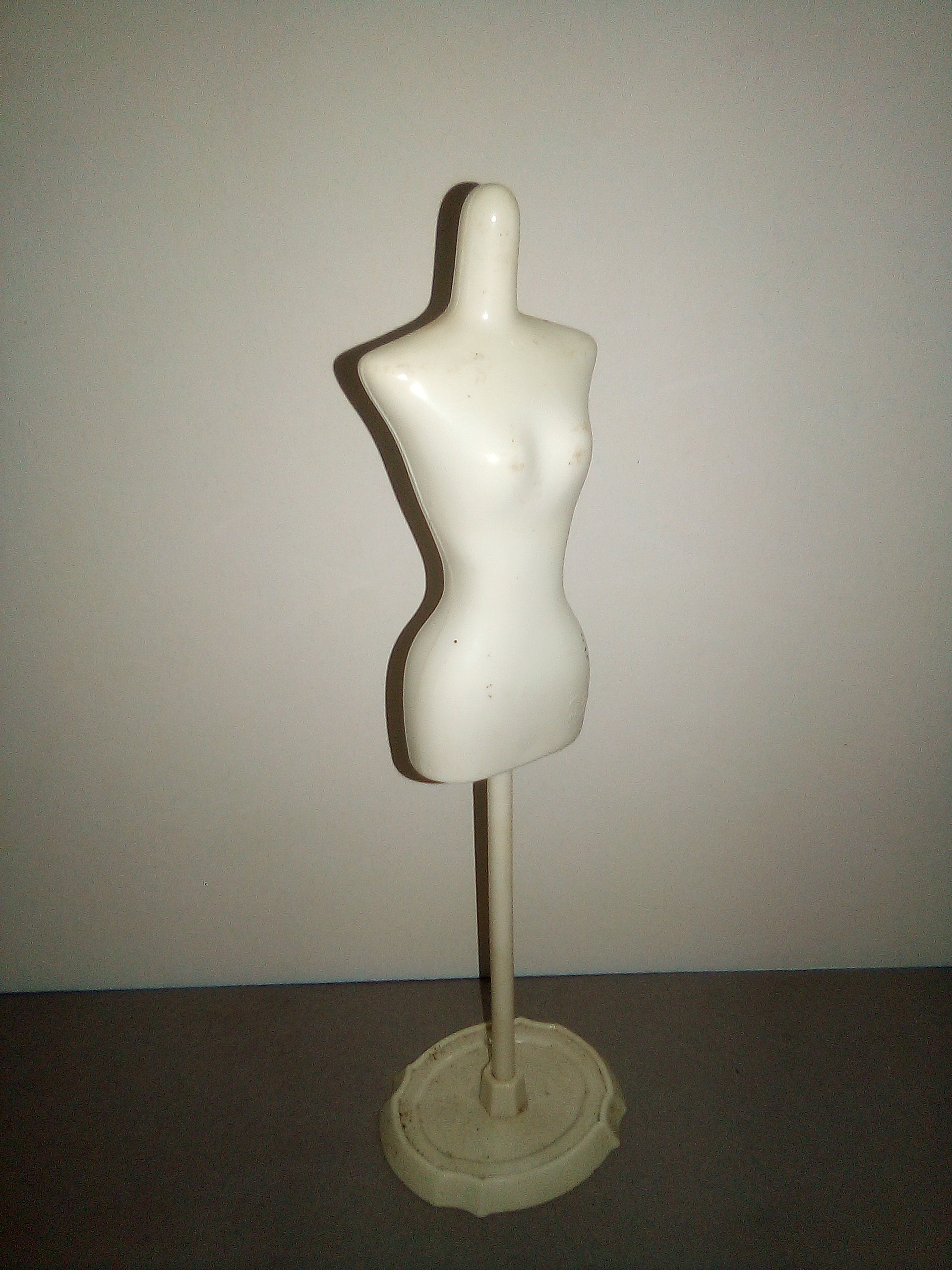
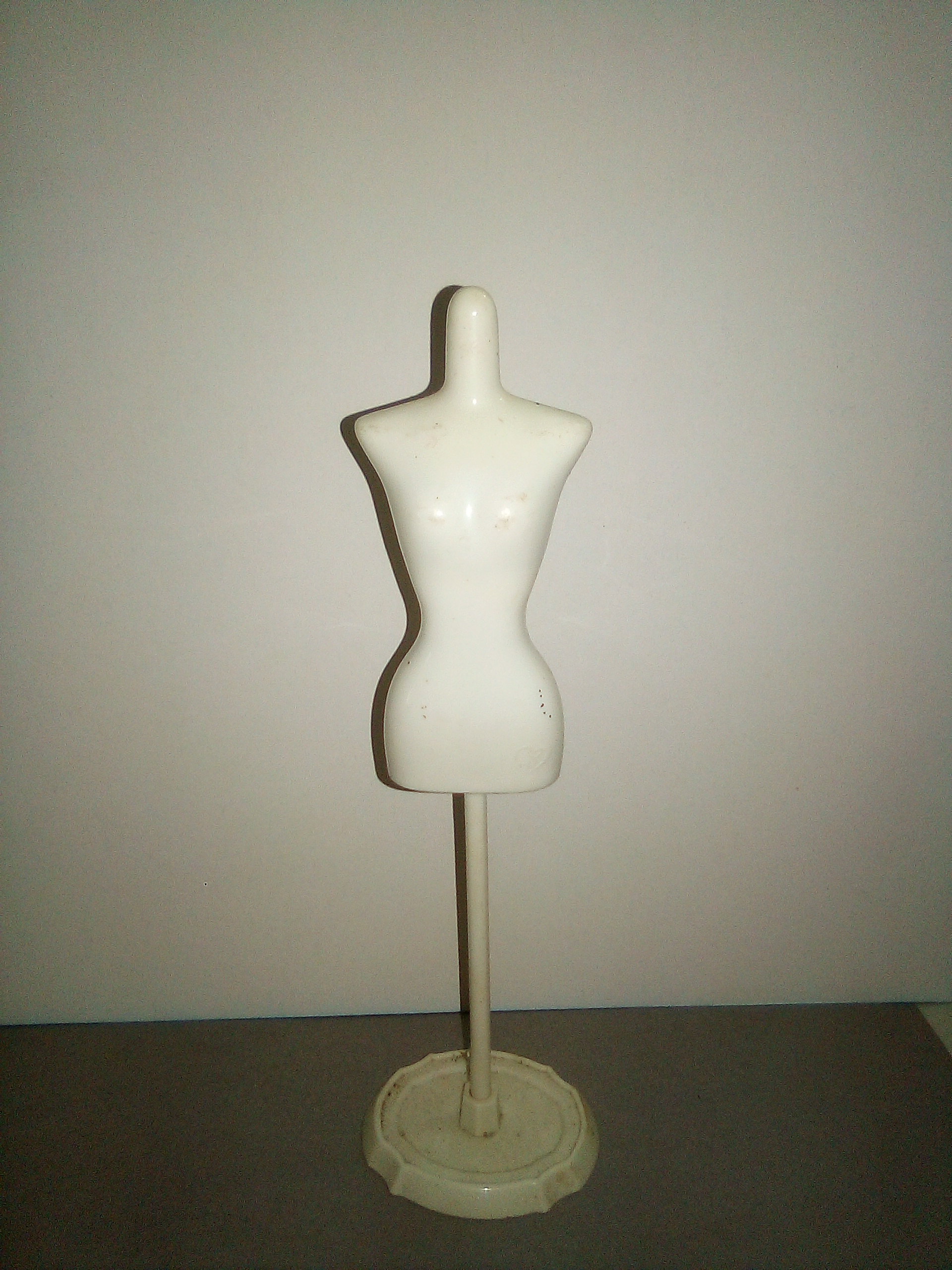
De esta manera por menos de 20$ puedo sacar infinidad de patrones personalizados. aunque debo admitir que poseer un maniquí debe ser mi proxima meta, la maquina de coser ya viene en camino, entonces enfocar mis esfuerzos en un maniqui como ese que se muestra en la foto deberia ser lo ideal, asi podré empezar a diseñar enteramente desde cero. Y como adelanto, Tal vez intente hacer uno personalizado utilizando la silueta de mi compañera de aventuras, de ser asi, muestro el proceso para que lo puedas hacer en casa, que ultimamente los maniquies de las tiendas parecen salidos del cirujano plastico.
In this way for less than $ 20 I can get an infinite number of custom patterns. Although I must admit that owning a mannequin should be my next goal, the sewing machine is on the way, so focusing my efforts on a mannequin like the one shown in the photo should be ideal, so I can start designing entirely from scratch. . And as a preview, Maybe I will try to make a personalized one using the silhouette of my adventure companion, if so, I show the process so that you can do it at home, that lately the mannequins in the stores seem to have come from the plastic surgeon.
Hola, que bien que estés empezando en este mundo costuril!! Es el mejor hobbie que puedes tener. Quiero darte unos tips que me ayudaron mucho cuando empecé. Este tipo de patrones son los que se conocen como "Tissue Patterns", están diseñados para ser "desechables" y abaratar costos (por eso son tan baratos). La idea no es que los pegues en la cartulina sino que los calquéis en otro papel o cartulina más duradero, no es necesario que uses pega. Incluso con papel bond sirve para esto.
Con lo del cuello: Puedes buscar en internet algun tutorial de como coser una "Camisa Polo". Venezuela es el único país que usa la palabra chemise para este tipo de camisa. Las intrucciones en estos patrones suelen ser muy confusas. También te serviría un tutorial de cuello con vista, las costuras suelen ser similares. Espero que te sirva
Hola, no sabía que los patrones tambien tenian calificaciones, existe alguno que sea tipo plastico rígido? Se me hace mucho mas facil marcar asi la tela, es eso lo que mas me cuesta, quiero decir:
¿Con que marcas la tela? Se que se suele utilizar tiza pero no se si es una tiza especial, yo uso un marcador de pizarra acrilica que al lavar se borra.
Y si, ya vi un video y aclaré mis dudas respecto al cuello, es mas facil de lo que pensaba la verdad, el proximo post espero ya haya llegado la maquina para poder practicar como se debe. Ahora me encuentro es investigando sobre telas, porque en la tienda a la que voy tiene muchas y con nombres raros, las dependientas intentan ayudar logicamente, pero me gustaria aprender para no llegar perdido jaja. Un abrazo anti-covid desde Monagas-Venezuela :D
El mundo de los patrones comprados es muyyyy complejo. Primero, debes rogar que las tallas sean correctas, y segundo como dices, entender las instrucciones. Lo importante es la paciencia y seguir instruyendose. Que bueno que pudiste maximizar el dinero en adquirir tus patrones estrategicamente, eso fue muy inteligente.